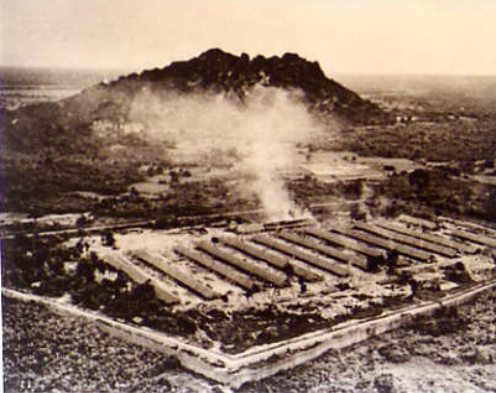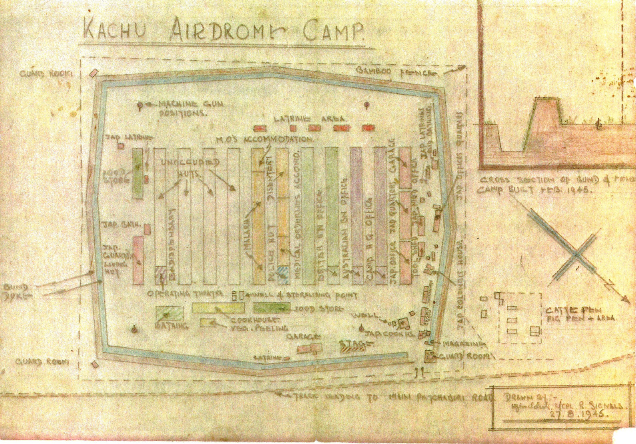Kachu Mountain Camp/Petburi/Perchburi/Petchaburi - Thailand
Kachu Mountain Camp/Petburi/Petchburi/Petchaburi
Kachu Mountain is about 15 kms south of Petchaburi in the Province of Petchaburi – the POWs travelled through Petchaburi town to reach their camp at Kachu Mountain.
We apologise in the past we have referred to Kachu and Petchaburi as two camps, when in fact it one single camp. (C. Mellor, June 2024). For all his assistance and guidance, we acknowledge and thank Terry Manttan, General Manager, Thailand-Burma Railway Centre, Kanchanaburi.
If you plan to visit this site, the only airport is Kachu Mountain. It is actually in the village of Tha Yang. (there is no airfield at Petchaburi).
The camp was 1/2 mile from the Buddist Monastery known as Wat Tham Rong and today (2023) is about 250 years old.

In early 1945 a work force was selected from hospitals (light sick) such as Chungkai and Tarsoe and other camps and sent to Kachu Mountain located some one hundred miles south of Bangkok, at the beginning of Kra Peninsula near a town called Petchaburi. Their task was to construct two airfields – the Japanese were preparing for the retreat of their own troops from Burma and facing the possibility of an Allied invasion. There were Japanese and Korean guards.
Kachu Mountain was named after a large mountain on the plains a few miles distant. On top of Kachu Mount itself was a tall white pagoda, evidently a landmark for Allied planes. Often on moonlight nights POWs would hear allied planes overhead and then heard them change direction as they reached the Pagoda. Because of its role in guiding Allied bombers to their targets, Kachu Mountain with its white pagoda became a beacon of hope for the POWs.
Situated on a plain in the midst of former rice paddies, Kachu Mountain was not a pleasant location. It was described as ‘flat, hot and dusty with little more than a clearing with a row of huts for eleven hundred prisoners (500 British, 600 Australian). It has also been suggested there may have been as many as 1500 British, American and Australian POWs here and by 11 March the camp had increased to 2,281 POWs with 831 of these in hospital. Many light sick were being transferred from Chungkai, the administration quietly pleased to be rid of them.
The perimeter fence was not the usual bamboo, but thorn.
The POWs had been rehabilitating after the completion of the railway and with their very poor limited diet were not in any fit state to begin a project requiring heavy physical work. Construction required POWs to hand-drill and break stones from a nearby quarry to ballast the airstrip. These sites were several miles from camp. Not only were the POWs weary and morale poor – their guards appeared so too! The guard’s uniforms were patched and shoddy.
The Japanese were also on high alert now aware of the Free Thai guerillas. They feared Allies had parachuted in under the cover of bombing raids to organise guerillas. Japan had suffered recent battle losses in Burma to the British and it was thought there could be POW uprising.
The POWs were not happy about being asked to construct an airfield for the Japanese to use against any Allied invasion and hinder their own release.
According to WX7204 Wally Lynn there were two airstrips built at Kachu Mountain. The first one turned to mud with torrential rain and the second airstrip was constructed with granite. This was the airstrip the Allied DC3s landed on to take out the POWs at the end of the war.
The POWs at Kachu and Ubon did not have radio access and were completely cut-off from the world and essential news of the war. They felt much abandoned and isolated.
This Camp was meant to be a temporary work camp and only contained limited facilities and amenities. POWs were not allowed to dig new latrines and not allowed a barber’s shop.
There was a chronic shortage of water as they were not near a river. A well was dug in the camp. There were limited latrines and a chronic shortage of water.
Les Cody in “Ghosts in Khaki” wrote from information gathered from 2/4th men working here
“Discipline within the camp was strict and petty with the usual quota of basher guards all aptly named: ‘The Snake’ ‘The Gobbler’ ‘Lt. Boots’ etc.
The camp also experienced frequent and terrifying electrical storms and a number of pythons which eventually ended in the stew.”
In April 1945 the men were moved further north through Bangkok to Nakon Nayok, approximately 100 km to the north-east.
Following is 2/4th’s WX9061 Corp. Danny Bevis’ account of Kachu Mountain.
‘March to Kachu Mountain 86 km (53 miles). Self picked up in truck 15 miles out (sick with malaria) and arrive Kachu Mountain 22 Feb 1945. The rest (POWs) arrive in a bad way on 24 Feb 1945. Building two aerodromes No. One 8 kms from POW Camp. No. two, 3 kms from POW Camp. (Remember POWS had to walk to and from work back to their camps – 8 and 3 kms is a long way when you are sick and exhausted at the end of the day) Conditions and Nips no Good. Self malaria all the time, nearly passed out.
28 April 1945 – 26 planes go over strafing the aerodrome. Machine Gun mounted by Nips outside hospital hut. Plenty Blackwater fever. Storms every night. 7 huts blown down in typhoon. I eat python and armadillo, not too bad.’
Reconnaissance photo of Kachu Mountain Camp

Plan of Kachau Mountain Camp/Petchaburi
Courtesy of Strike a New Note!”: Kachu Mountain and Ubon
At the end of the war many men from the Prachaub Kirikhan Mergui Escape Road were flown from near the coast of Burma to Kachu Mountain Camp. The landing strip in the jungle was completed in time for three C47 Dakota aircraft to land and firstly evacuate the British POWs to Rangoon. The Australians at Kachu Mountain Camp were flown to Singapore.
Those from 2/4th known to be at this camp include
Heppingstone WX8525 from Kanchanburi to Kachu/Petchaburi
WX9419 Harry Steele from Kanchaburi – Tamarkan – Pratchinburi – Linson Wood – Kachu.
Gordon Foot WX15719 was evacuated here from Nakom Chassi via Chumphon at the end of the war.
WX7499 Ralph Thomas WILLIAMS March – July 1945 – then sent Nakom Nayok.
WX9333 Arthur Thomas WHITE from Chungkai to Kachu Mountain Camp.
WX178904 Albert Sidney WEBB from Chungkai to Petchaburi to Lopburi to Nakom Nayok.
WX8502 Elliott Alfred Alexander WATT from Chungkai to Petchaburi to Nakom Nayok.
WX9381 Arthur Henry WATSON – from Nacompaton to Kachu Mountain Camp/Petchaburi
WX7248 Frank THAXTER from Mergui Escape Road to Petchaburi
WX9429 Harold STEELE from Petchaburi to Linson Wood Camp to Petchaburi.
WX107894 Percy STURTRIDGE from Mergui Escape Road to Petchaburi
WX9827 Reg STRIBLING from Nakom Chassi.
WX13552 Roy SMITH from Chumphon to Petchaburi/Kachu Mountain Camp.
WX7784 John Wilfred SMITH from Chunkai to Kachu Mountain Camp/Petchaburi to Chumphon to Nakom Nayok.
WX5007 Jack SCHURMANN Chungkai to Linson Wood to Kachu Mountain Camp to Bangkok to Nakom Nayok to Bangkok.
WX6799 Ern RICKETTS from Non Pladuk to Kachu Mountain Camp/Petchaburi to Bangkok.
WX7621 Bill REEVES from Mergui Road Escape to Petchaburi to Bangkok.
WX8225 John PRYCE Kachu Mountain Camp/Petchaburi.
WX10790 Harry Claude NORRIS from Kanchanaburi to Non Pladuk, Chumphon, to Kachu Mountain Camp/Petchaburi to Bangkok.
The following is an Affidavit by J H Flanigan WX9777 who was POW at Kachu Mountain Camp from 15 Feb 1945 to 11 Sept 1945 and prepared for the War Trials.
The Japanese Camp Commander was known to POWs as “Paddle Foot”. He allowed his subordinates to virtually run the Camp which became known for for brutal guards such as “Lt. Boots”, “The Snake”, “The Gobbler” and ‘Gold Tooth” to name a few.
Flanigan himself received several unprovoked beatings as did WX9391 Sgt Doolan of the 2/4th.
“The Gobbler” and “Gold Tooth” took care of the administration and basically ran the camp.
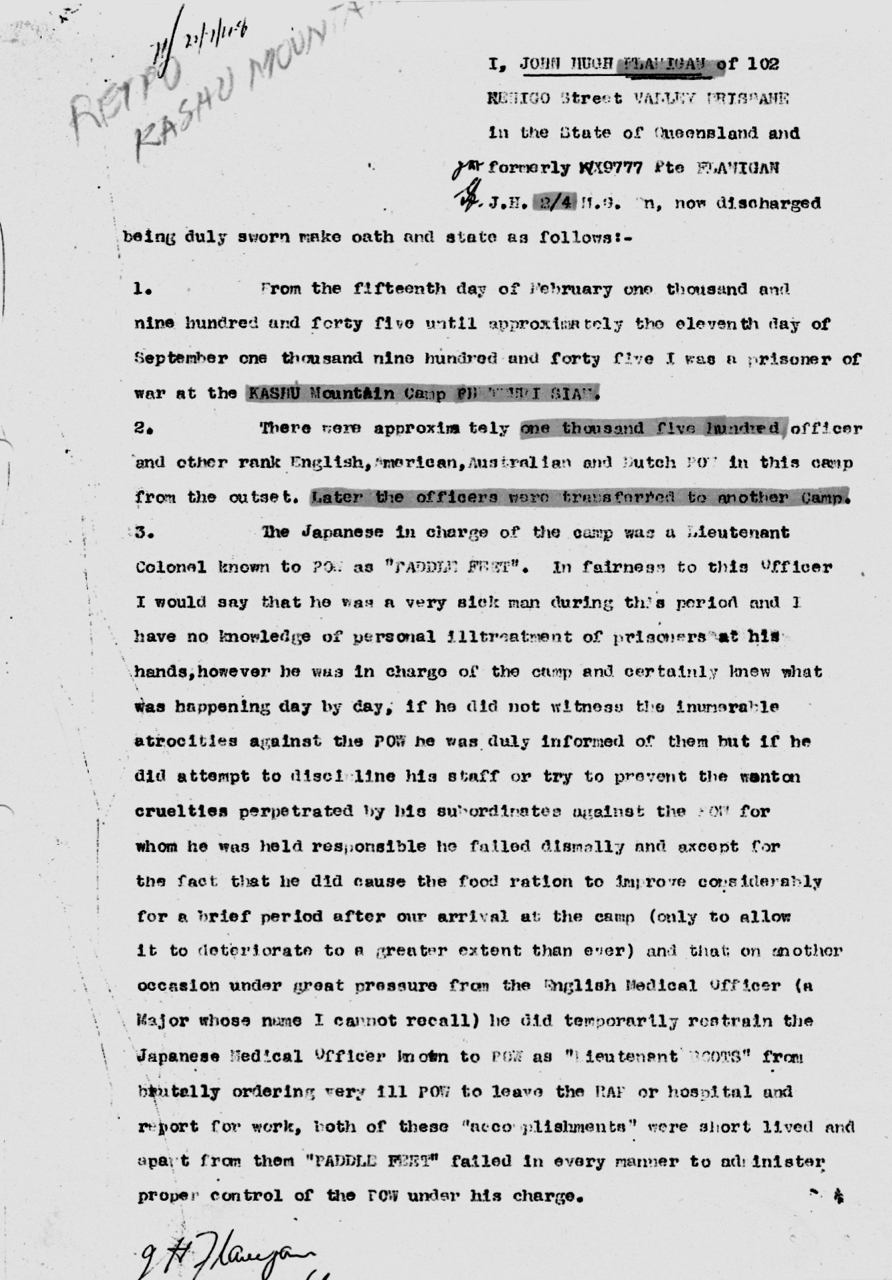
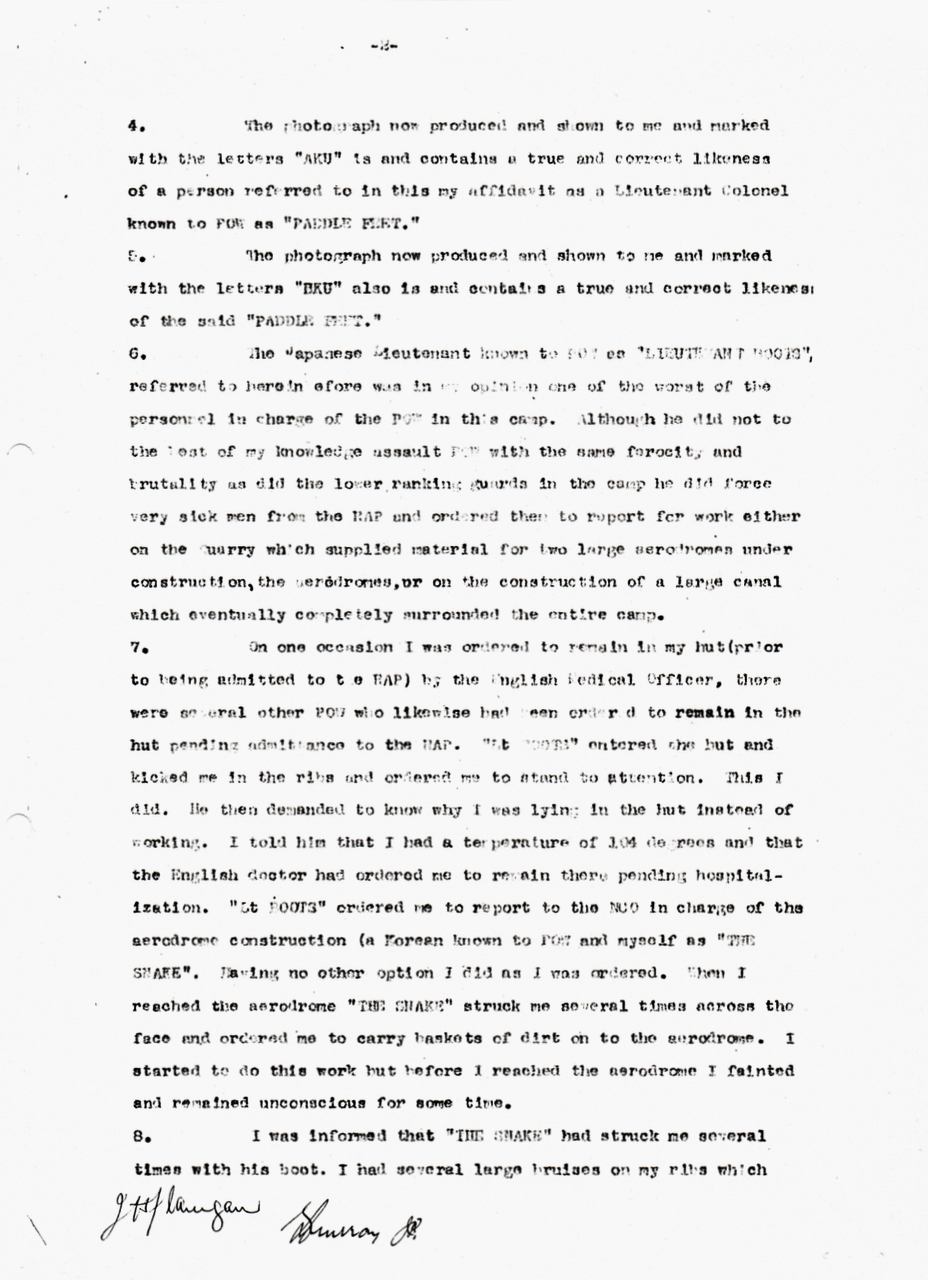
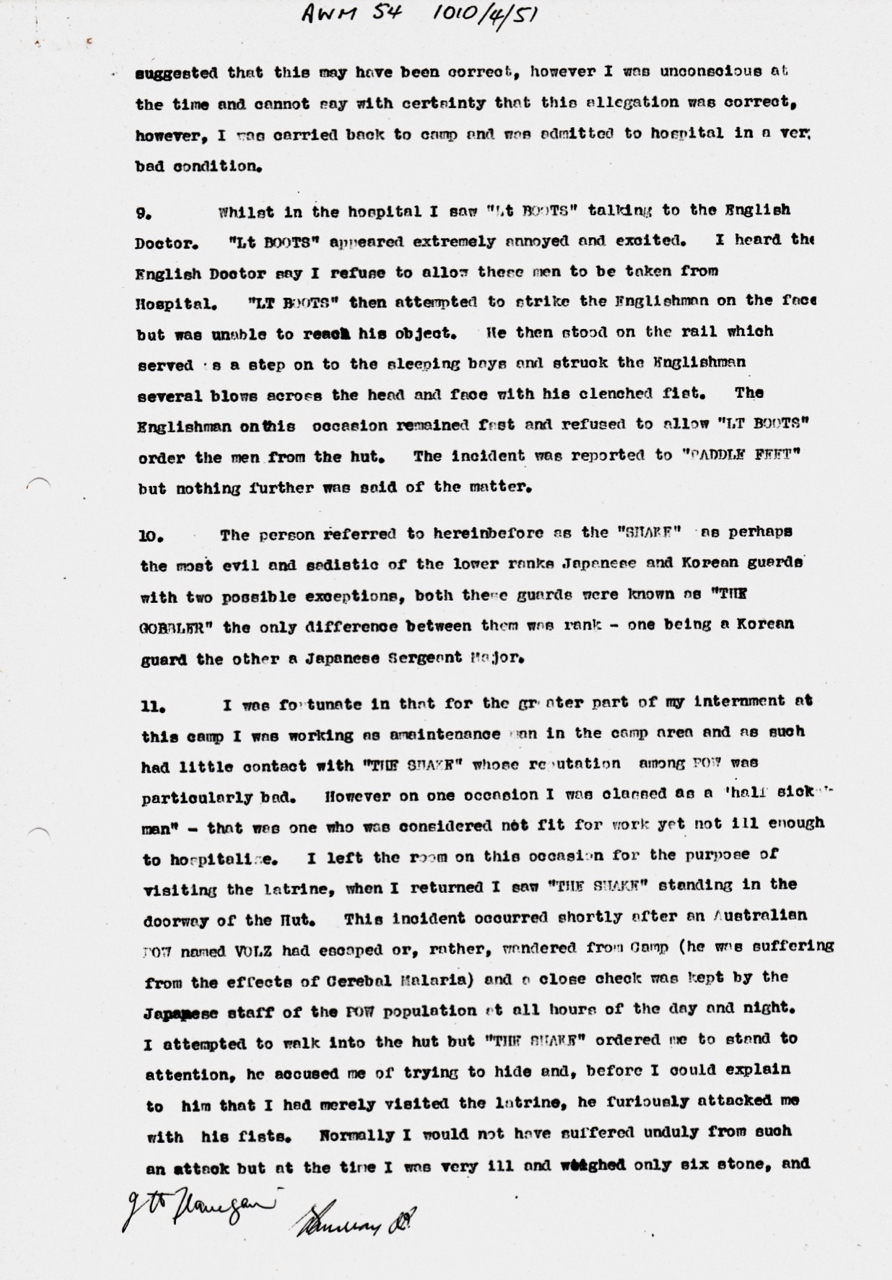
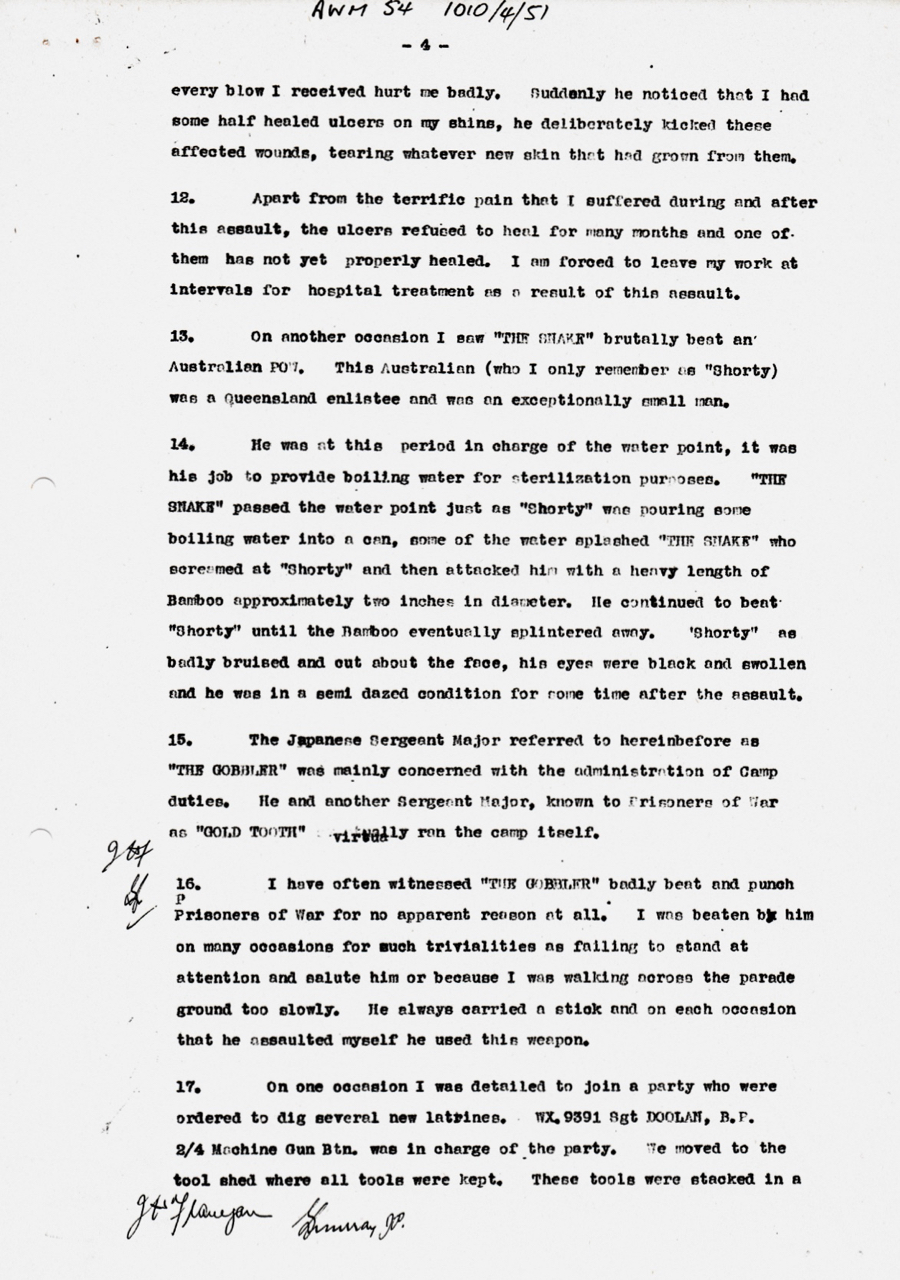
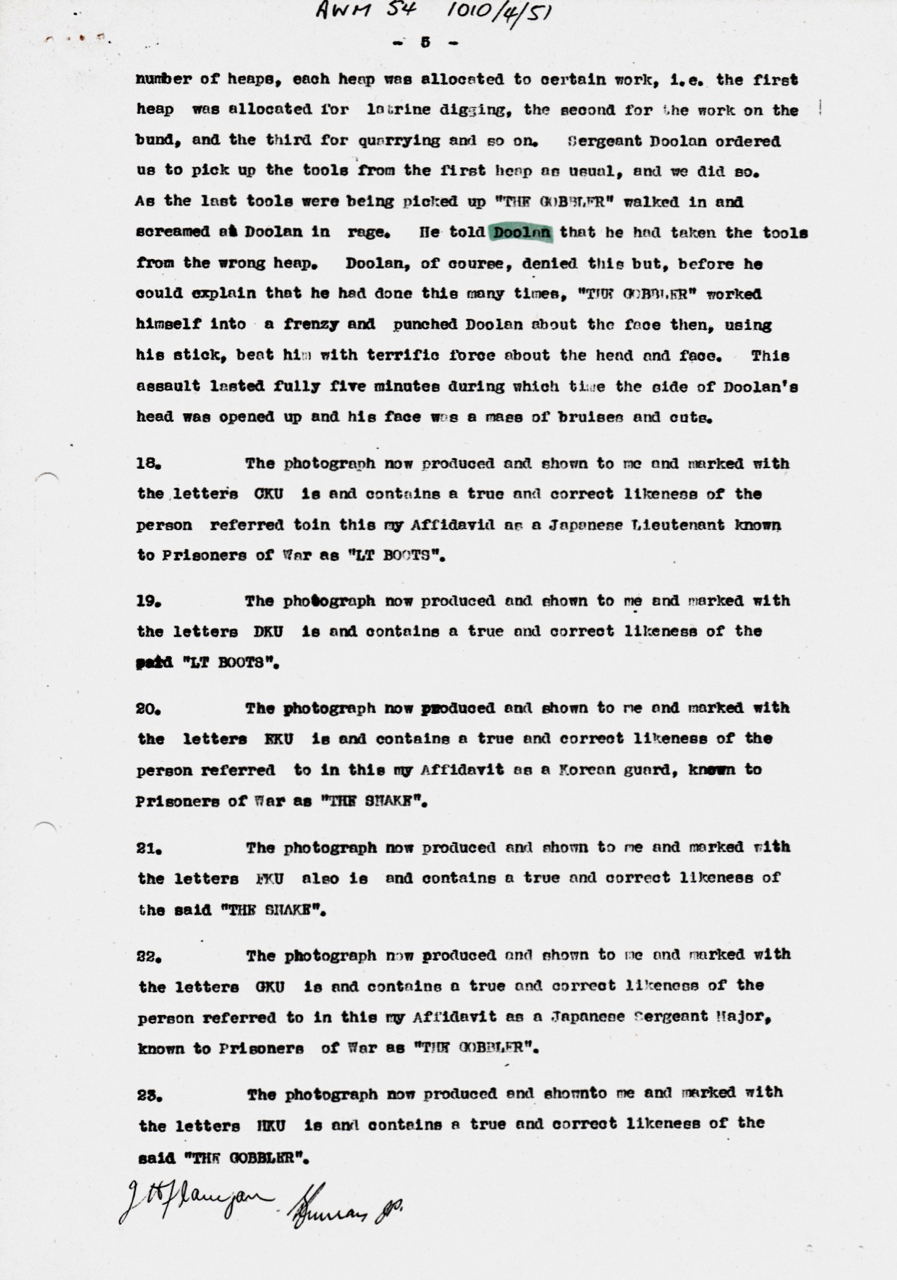
The following is from the Diary of Danny Bevis:
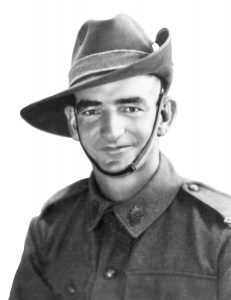
‘March to Kachu Mountain 86 km/53 miles (from Non Pladuk). Self (Bevis) picked up in truck 15 miles out (malaria) and arrive Kachu Mountain 22 February. The rest arrive in a bad way on 24 February. Building two aerodromes No. 1 eight km from camp, No. 2 three km from camp. Conditions and nips no good. Self malaria all the time, nearly passed out. 26 planes ago over 28 April 1945, strafing drome. Machine gun mounted by nips outside hospital camp. Plenty blackwater fever. Storms every night. 7 huts blown down in typhoon. I eat python and armadillo, not too bad. ‘
Established in February 1945 and had it attained a strength of 2,526 by March which consisted of that and approximately equal numbers of British and Australian prisoners of war. The main work here was the construction of the landing strip and aerodrome. The camp site itself was originally a paddy field and after tackling many difficulties the camp was quite reasonable as a prisoner of war camp standards go. The work at this camp whilst hard was reasonable and the men’s health generally improved, as did relations with the Japanese. For about 10 days prior to 18 August 1945 everyone in camp suspected that something was afoot. Work on the aerodrome ceased on 15 August and on 18 August 1945 the Japanese Commandant announced that hostilities had ceased. Red Cross parcels and clothing that had been confiscated by the Japanese were made available immediately. This airstrip would at the end of the war, become a collecting and forwarding point for ex- prisoners of war. As men came into this camp from surrounding areas they would be processed and forwarded onwards by aircraft, initially to Rangoon and then directly to Singapore.
WX7626 ‘Slim’ PITTS was moved from Chungkai to Kachu Mountain Camp (Pitts was with the theatrical party). He was then moved to Bangkok, Nakom Nayok, Lopburi, Nakom Nayok to Bangkok.
Also WX13027 Charles PIGGOTT was also moved from Chungkai to Kachu Mountain Camp before moving to Nakom Nayok, Lopburi, Nakom Nayok, Bangkok (both men mentioned in Danny Bevis’s Diary).
WX9268 Joe PEARCE was moved from Kachu Mountain/Petchaburi Camp, to Bangkok, Lopburi, Nakom Nayok then to Bangkok.
WX10790 Harry Claude NORRIS from Kanchanaburi to Non Pladuk, Chumphon, Kachu Mountain Camp/Petchaburi to Bangkok.
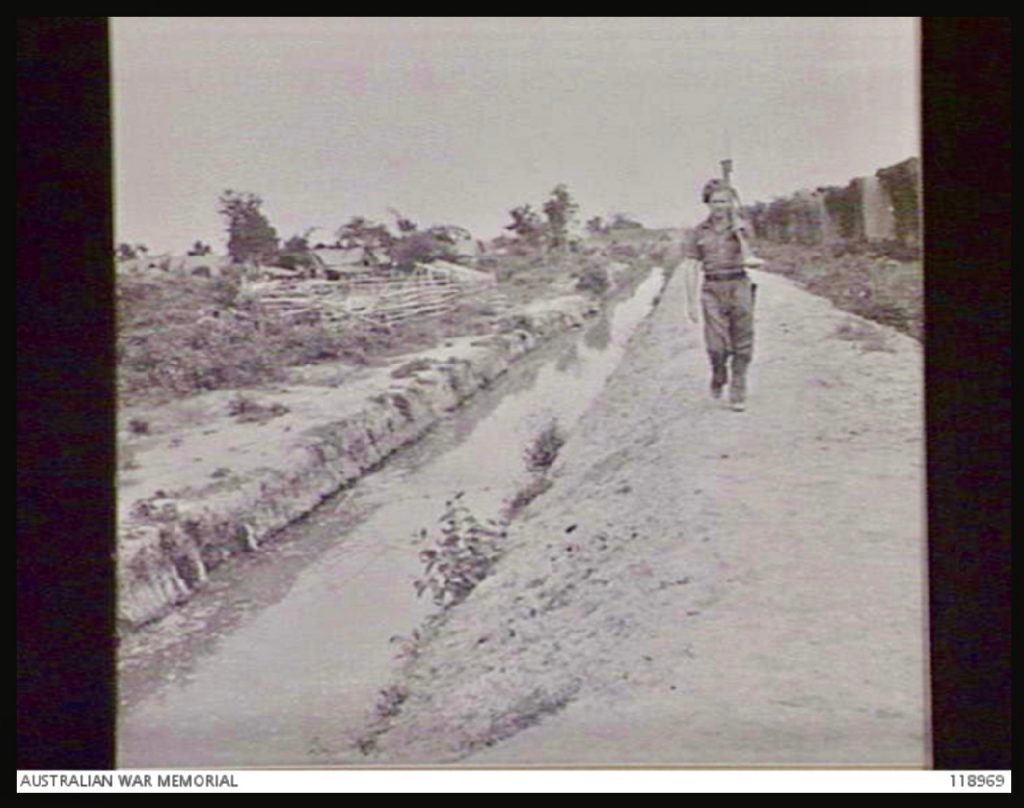
Kachu/Phetburi, Thailand. 23 September 1945. A corner of the Phetburi prisoner of war (POW) camp showing the anti-escape ditch constructed by the Australians under the direction of the Japanese. Phetburi (Petchaburi) lies approximately 160 kilometres south of Bangkok on the Singapore-Thailand railway. Following completion of the Burma-Thailand railway in 1943, the surviving POWs were concentrated in the Kanchanaburi area. From there, numerous working parties were dispatched in 1944-45 to various locations in Burma, Thailand and Indo China. Phetburi was one of these locations. The camp was built by Australian POWs in February 1945. At one period 2,500 mixed POWs were quartered in the camp, and employed on aerodrome construction. The completed tarmac, never used by the Japanese, was used by Allied aircraft to evacuate surviving POWs at the end of the war.


Phetburi (Petchaburi), Thailand. 23 September 1945. The ceremony of “The Retreat” being carried out by the 8th Division ex-POWs of the Japanese at the Petburi POW camp. Phetburi lies approximately 160 kilometres south of Bangkok on the Singapore-Thailand railway. Following the completion of the Burma-Thailand railway in 1943, the surviving prisoners of war (POWs) were concentrated in the Kanchanaburi area. From there, numerous working parties were dispatched in 1944-45 to various locations in Burma, Thailand and Indo China. One of these groups was sent to Phetburi to work on the construction of an aerodrome near Kashu (Katchu) Mountain camp. At the end of the war Allied aircraft used this aerodrome for the evacuation of surviving POWs in the area.
We wish to acknowledge AWM for the above photograph and information.


